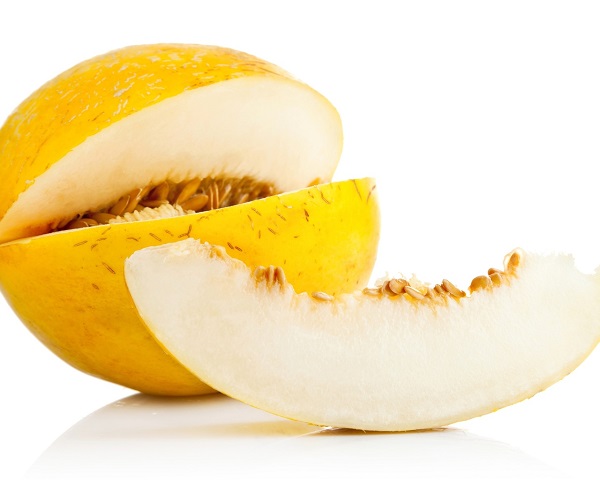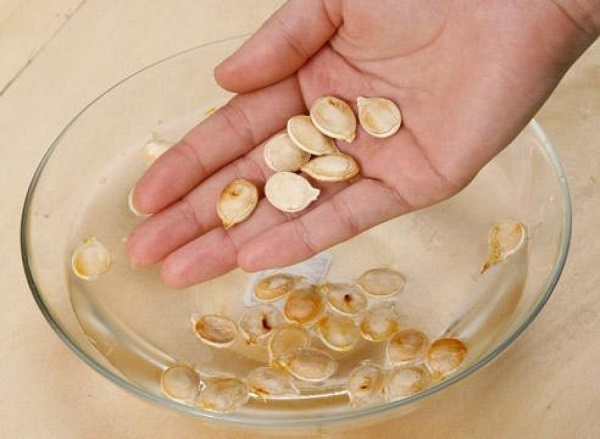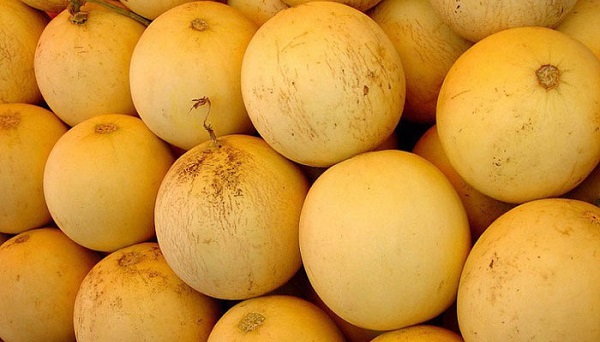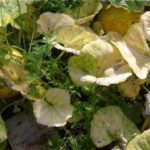This culture is considered capricious, requires special conditions for growing. Many varieties are cultivated exclusively in the southern regions. But the melon collective farmer is perfect for breeding in areas of the middle band, even in open ground.
Table of contents
Description and characteristics of melon collective farmer
This variety is popular for areas with risky farming. Indeed, in the Volga region or in the Urals there is no opportunity to grow a normal berry without planting it in a greenhouse.
The variety has been known since 1943, and since then it has been very popular among gardeners, as it pleases with good harvests in any summer, not even very sunny. The fruits are small, do not exceed one and a half kilograms, but very sweet and fragrant. The skin is thin, the flesh is white.

Breeding history and region of growth
Under greenhouse conditions, the melon is beautifully grown in Holland, Italy, France, Japan and Bulgaria. Since the nineteenth century, the kolkhoznitsa began to be grown on the territory of Russia in greenhouses, since it has not reached greater distribution. In the middle lane, with all the requirements for cultivation, the first harvest can be obtained in May.
The advantages and disadvantages of the variety
Here is a description of the main advantages of the variety, thanks to which it is popular among gardeners:
- excellent taste;
- resistance to temperature changes during cultivation;
- good transportability.
Minus one is not a very long storage period. Only unripe specimens are able to lie a little longer.
Rules for planting in open ground
To grow melons, one should choose a bed well lit by the sun, safely sheltered from the winds and having fertile, well-fertilized soil. It will be better if the beds begin to prepare in advance in the autumn. For this, the area set aside for planting is dug up, organic matter is added to the soil.
In springtime, the beds are dug up, and fertilizer compositions of the phosphoric and potash groups are introduced into it. After the work is done, landing is permitted. For seedlings, seeds should be chosen larger. They are pre-treated with growth stimulants or boric acid containing zinc sulfate. After completing this treatment, the seeds should be soaked in water for twelve hours.

Gardeners with the experience of seed are subjected to hardening. For this, they:
- poured sunflower seeds with water, the temperature of which is thirty-five degrees;
- take out the seed and keep it for 24 hours at room temperature;
- for twenty hours the seeds are transferred to a place where the temperature is zero degrees;
- then return the seeds to the previous conditions.
Such actions with seeds are performed not less than three times a week before planting.
Planted seeds in peat tanks that protect the roots at the time of transplanting. Young plants do not even have to get out of cups - they are planted directly into them. Such a measure even additionally fertilizes the beds.
Before sowing, the cups are filled with soil, which they buy in stores or cook with their own hands. In this case, the mixture should consist of nine parts of peat, and one part of sand and wood ash. Pre-soaking the seed will sort out the empty seeds that remain floating on the surface.
Planting seeds to a depth of five centimeters, two pieces. Until shoots appear, the containers should be in a room with an air temperature of about twenty degrees during the day and no less than fifteen at night. Melon starts to emerge in about a week.When the seedlings form the third leaf, the plants pinch to give them the opportunity to begin forming side branches.
Growing conditions
Transplanted seedlings in small holes according to the scheme "seventy by seventy" centimeters. It is only necessary to wait until the threat of night frost has passed. Water is poured into the arranged holes, a little humus is brought in, then the seedlings are planted so that an earthen lump can be seen above the bed surface. The plant is watered, sprinkled with earth a little. For a few days after planting the seedlings should create a light shade.

Peculiarities of this variety
- the culture is famous for the fact that under any climate conditions it is able to give a good harvest;
- melon seeds can be dried and then eaten separately;
- it is contraindicated to eat it along with milk or alcoholic beverages - the likelihood of poisoning is high;
- melon pulp of white color, crunches.
Diseases and pests
Like many vegetable crops, melon is capable of suffering various diseases that affect the weight and taste of fruits.Sources for infection can be considered soil composition, weeds, seed stock, the remnants of last year’s plants.
Most often the melon is ill with mealy dew. It appears a special whitish bloom on the stem parts and foliage of plants, it causes drying. Dropped foliage stops the development of the fetus, its quality deteriorates. But the collective farmer has a good resistance to this disease.
- Fusarium on melon sheets
- Mealy dew on melon
- Cucumber mosaic on a leaf melon
The second melon problem is fusarium. It is distributed through the soil by seeds and residues of vegetation. The disease spreads quickly, plants can die within a few days. Such viruses are prevented by treatment with chemical compounds.
Another disease - viruses cucumber and watermelon mosaic. Infection occurs with the help of aphids, which transfers the infection from infected plants to healthy ones. As a rule, this happens at the second stage of the vegetative period and reduces the yield almost twice.
Following all the recommendations, you can always grow a good harvest of this berry on your site. True, fresh fruit does not last long. But experts have found a way out - dried melon is very tasty in dried form, it retains almost all useful components.



